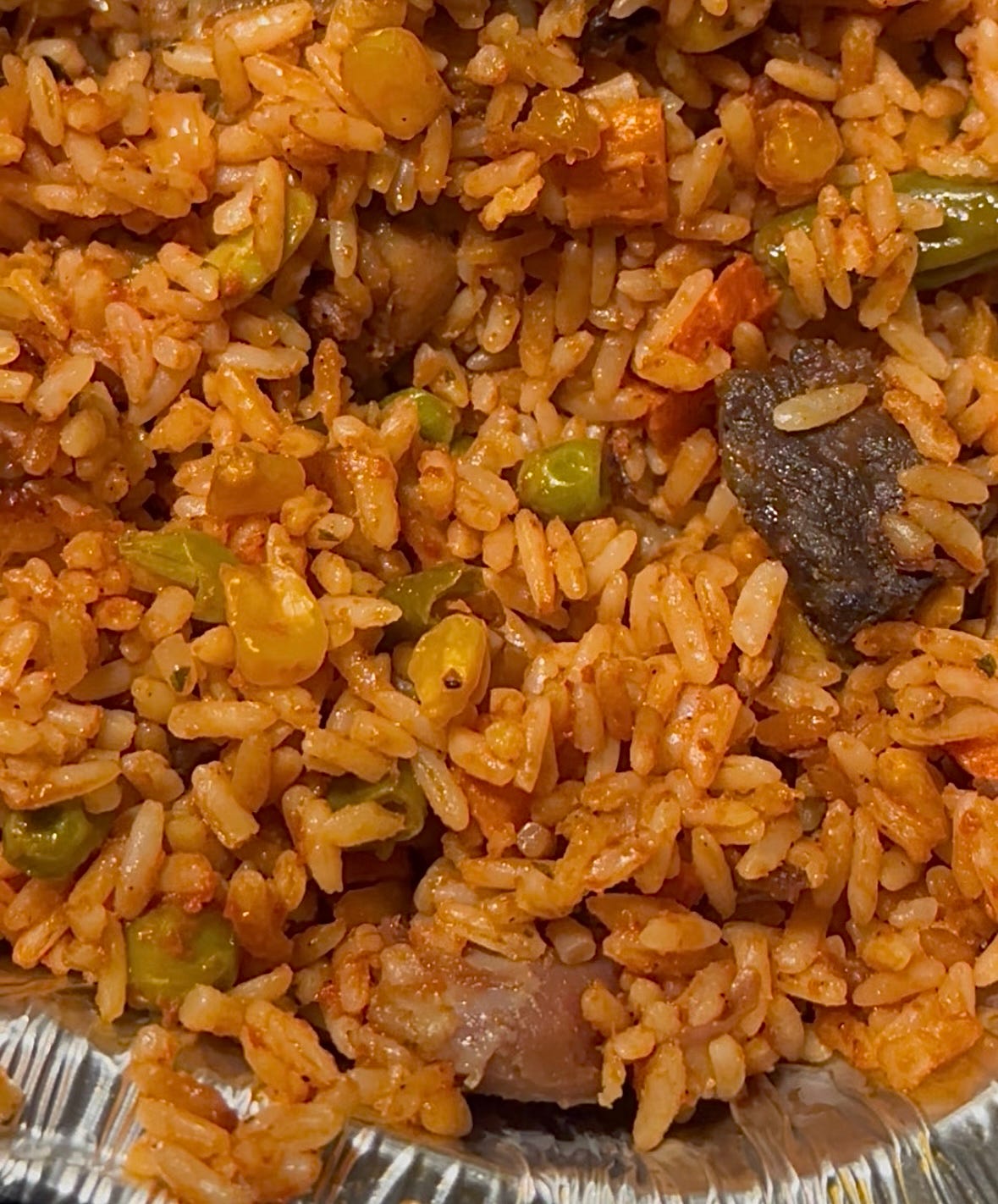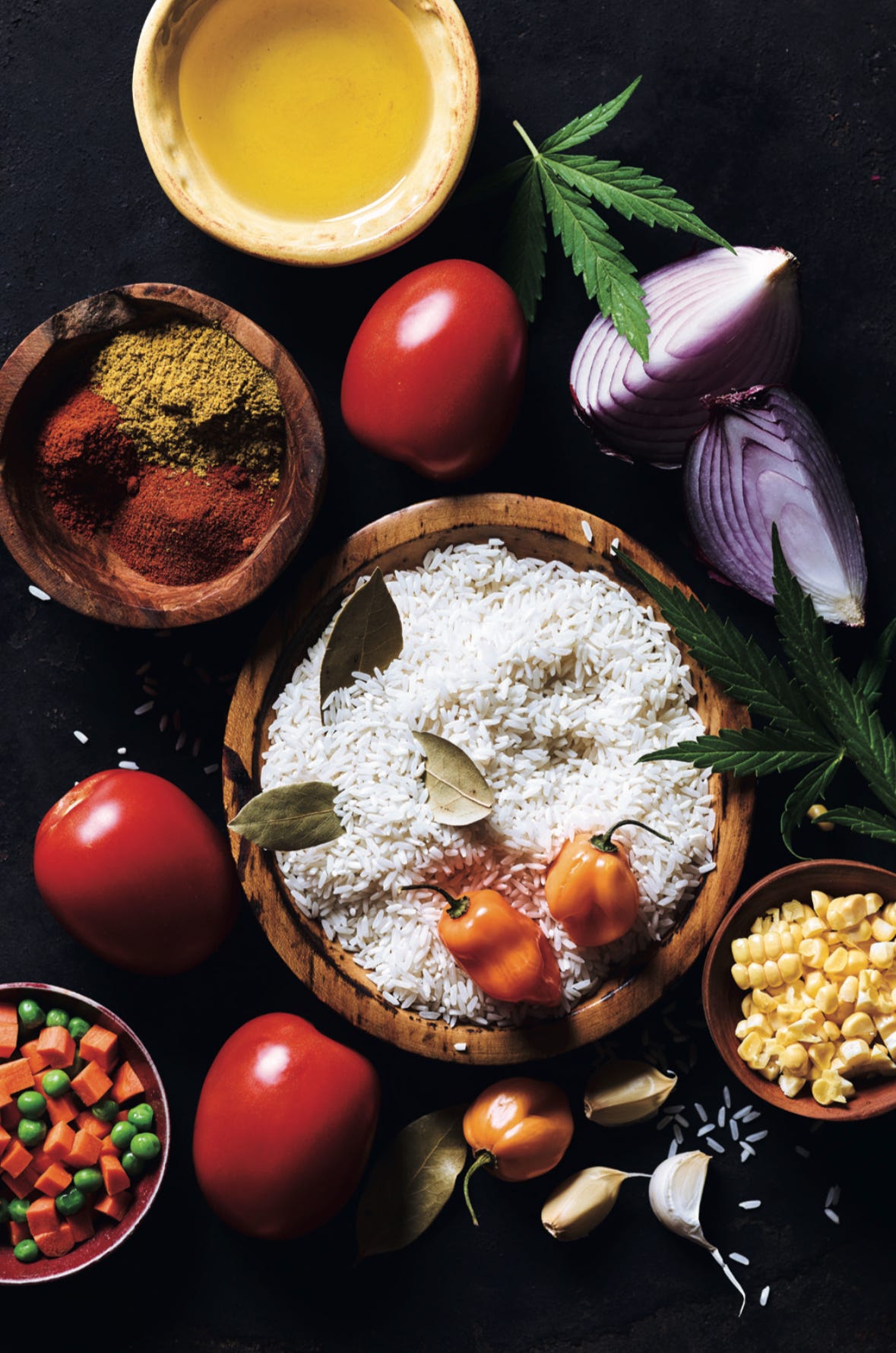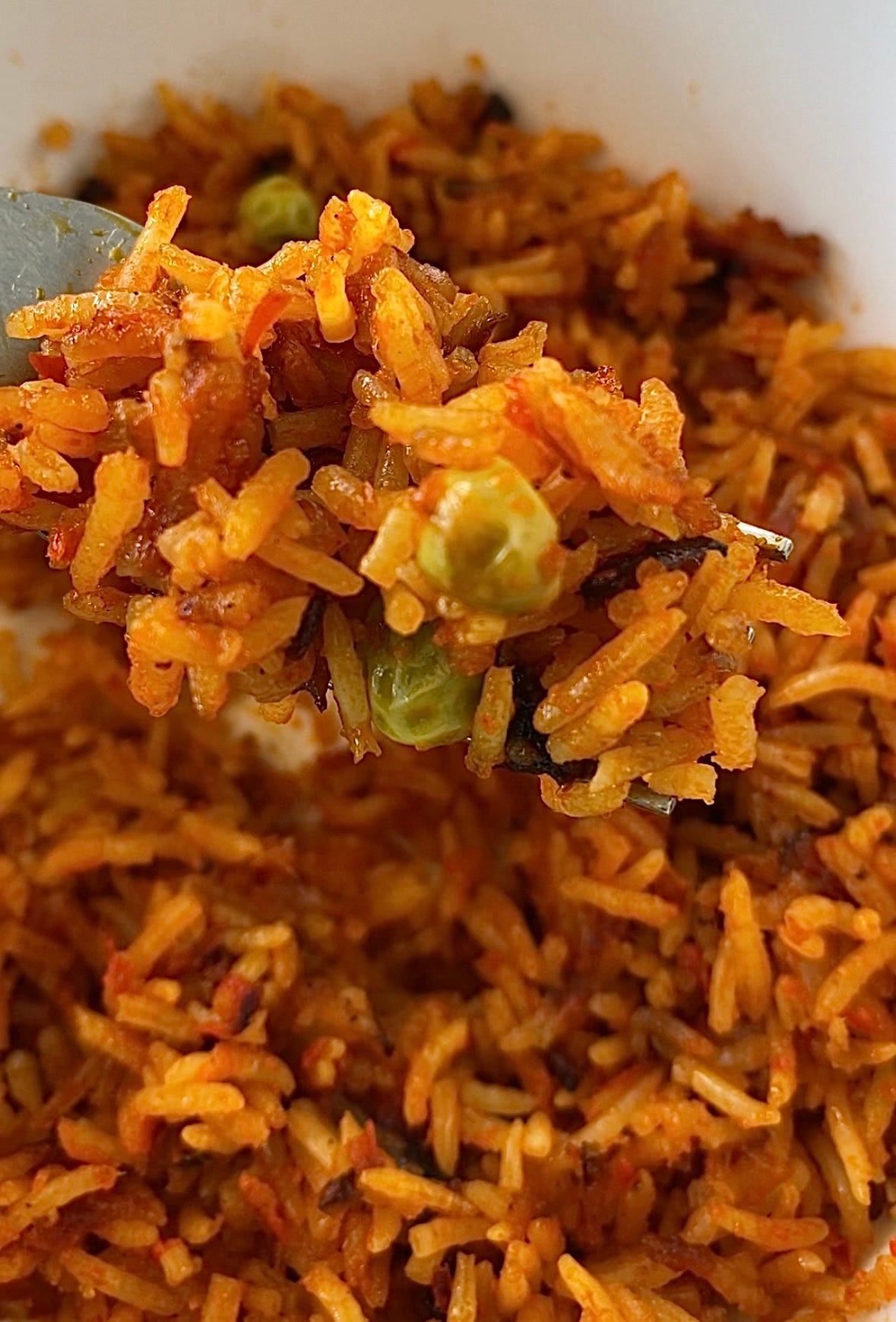The High History of Jollof & Arroz a la Mexicana
A brief culinary journey of rice and an infused West African classic
There’s a familiar hiss of starchy rice water dripping onto hot burners that reminds me of my mother. Her jollof rice—her cooking in general—was never curated like Meghan Markle’s or that of influencers with Reels account managers and video editors. She often cooked rice while bathing one child, reasoning with another, and making sure the others finished their homework. Even still, Vivian Aggrey’s jollof was the comfort and stability of my youth.
Jollof rice is a West African staple that originated between the 14th and 16th centuries in the Wolof or Jolof Empire, located in the Senegambia region — present-day Senegal, Mauritania, and Gambia. The classic version begins with a puréed base of tomatoes, hot peppers, onions, and garlic, then gets adorned with vegetables, fish, or meat, and often served with plantains or Cornish hen cooked in red palm oil.
The exact preparation of jollof varies depending on where in the world you find it—it’s why I’m convinced that arroz a la mexicana, jambalaya, and even paella are all descendants of the OG mother dish: Jollof.
Whether it’s Ghana or Guerrero, we season with memory and spice.
Arroz a la mexicana is a red rice dish of Mexico and much of Latin America, also known as arroz rojo and Spanish rice. It’s a staple served at weddings, funerals, during Semana Santa, and in everyday comida corridas. Though deeply embedded in Mexican tradition, some historical accounts suggest Spanish colonizers introduced the dish in the 16th century, alongside heirloom rice varieties and culinary techniques shaped by North and West African knowledge systems during the era of pre-colonial trade of gold, ivory, rice and spices.
The overlap between arroz a la mexicana and jollof of toasted rice husk, tomato, and pepper is not a cute coincidence but historic connection. Tomatoes, native to the Americas, reached West Africa via European ships. Rice traveled in both directions, from Asia and from Africa and met in the middle of empire and culture. Whether it’s Ghana or Guerrero, we season with memory and spice.

Types of West African Jollof
Liberia, the birthplace of my father, is a country known to withstand hot peppah, making Liberian jollof rice spicier than most. Traditionally, Liberian jollof rice is cooked with parboiled rice (rice that has been partially boiled in its husk), mixed with vegetables, lamb, chicken, fish, or shrimp.
In Ghana, where the maternal side of my family hails, jollof is made with basmati or jasmine rice—not traditional, but an excellent rice for maintaining a fluffiness while retaining incredible flavor. Nigerians, who pride themselves on preparing the best jollof, sometimes spelling it as jelof, start with a tomato and red bell pepper purée that lends to a high-grade flavor that I now add in my recipes. It makes for a smoky and complex base. Whereas in Senegal, the birthplace of jollof, sometimes tamarind, fish sauce, fermented bean and palm butter are incorporated.


African Rice.
Although many of us think that rice only comes from Asia, all rice consumed today comes from one of the two species: African rice (Oryza glaberrima) and Asian rice (Oryza sativa). According to the historian Marius Canard, author of Le Riz Dans Le Proche Orient Aux Premiers Siècles De L'Islam Rice in the Near East in the First Centuries of Islam, said rice has been cultivated in West Africa for at least 3,000 years ago in 1025 BCE.
“The standard belief that Europeans introduced rice to West Africa and then brought the knowledge of its cultivation to the Americas is a fundamental fallacy.” — Judith Ann Carney
In the book Black Rice: The African Origins of Rice Cultivation in the Americas, Judith Ann Carney examines, through historical and agricultural research, what a significant role rice played in West African society for a thousand years before Europeans ever got there. Carney goes on to emphasize “the standard belief that Europeans introduced rice to West Africa and then brought the knowledge of its cultivation to the Americas is a fundamental fallacy, one which succeeds in effacing the origins of the crop and the role of Africans and African-American slaves in transferring the seed, the cultivation skills, and the cultural practices necessary for establishing it in the New World.”
Thanks to the internet, I’ve seen techniques of braiding rice into the cornrows of African hair to demonstrate how rice grains and other seeds might have traveled to Mexico, Brazil, the U.S., Portugal, and Spain. In Leah Penniman’s groundbreaking book, Farming While Black, the author explains that “as insurance for an uncertain future, they [Africans] began the practice of braiding rice, okra, and millet seeds into their hair. They continued the practice of seed smuggling, picking up grains from the threshing floor and hiding the precious kernels in their braids.”

Connecting the Dots
The history of African foodways, culture, and its botanical legacy has been brutally distorted by anti-Black colonial perspectives, erasing Black Indigenous voices from our own histories. This makes the job of an ad hoc food historian particularly difficult when trying to trace back the origins of our food and its possible influence around the globe. But for those of us who are lucky enough travel the word and sample various international foods, you soon recognize that spices, herbs, and food don’t lie. They tell the truth about how we’re connected.
Like all good food, it travels—carrying the stories of how we’ve moved, survived, thrived, and continue to make damn good one pot rice dishes along the way.
The Recipe —
Keep reading with a 7-day free trial
Subscribe to TASTE BUD to keep reading this post and get 7 days of free access to the full post archives.







